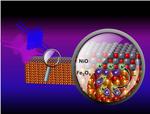Other
News Robotics Ramp-Up: NVIDIA Sets Milestone in Delivering Unified Platform for Building Autonomous Machines

“NVIDIA has released updated capabilities for robotics AI perception and simulation, with a new version of the NVIDIA Isaac software development kit. Announced by company founder and CEO Jensen Huang at NVIDIA’s latest GPU Technology Conference, the SDK achieves …

“Researchers at The Ohio State University, in collaboration with scientists around the world, have made a discovery that could provide new insights into how superconductors might move energy more efficiently to power homes, industries and vehicles. Their work, published last …

“Researchers watch and measure in real time charge dynamics between layers of oxide materials, offering insights into solar cells. The Science Much remains to be learned about how charge moves along the molecules that make up the layers of materials …

“While diving into the Atlantic Ocean off the shores of North Carolina with his friends in 2010, Ian Burkhart, then a college student, sustained a devastating spinal cord injury that left him paralyzed from the chest down. But with a …

“Researchers use magnets to move tiny nano-devices faster than ever before Researchers have devised a magnetic control system to make tiny DNA-based robots move on demand—and much faster than recently possible. In the journal Nature Communications, Carlos Castro …

“Gallium oxide shows high electron mobility, making it promising for better and cheaper devices. The next generation of energy-efficient power electronics, high-frequency communication systems, and solid-state lighting rely on materials known as wide bandgap semiconductors. Circuits based on these materials …

“Quantum fluids may mix in very weird ways, according to new computer simulations of exotic states of matter known as Bose-Einstein condensates (BECs). Far in the future, BECs may enable new kinds of ultra-fast computers. But for now, researchers are …

“A “superacid” much stronger than automobile battery acid has enabled a key advance toward a new generation of LED lighting that’s safer, less expensive and more user friendly. Researchers at Oregon State University used the organic superacid to improve …

“Researchers in Oregon State University’s College of Engineering have taken a key step toward the rapid manufacture of flexible computer screens and other stretchable electronic devices, including soft robots. The advance by a team within the college’s Collaborative …

“Polymer solar cells may lag behind traditional silicon solar cells in longevity and efficiency, but could ultimately power autonomous remote sensors and wearable technology. From the Journal: Journal of Renewable and Sustainable Energy Unlike traditional silicon solar cells, organic polymer …
